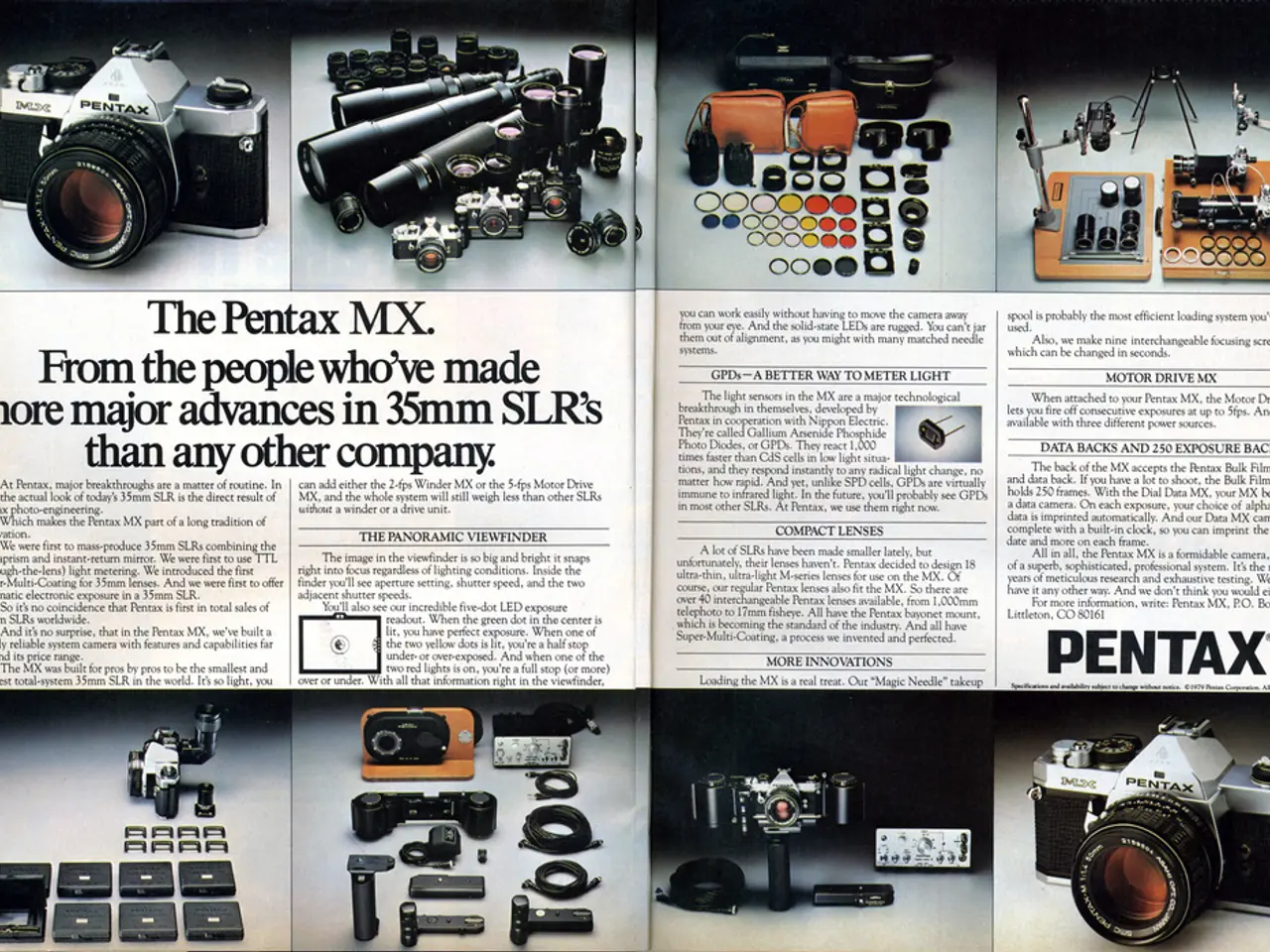Camera Integration Bolsters AI Motion Determination in SynthEyes 2025.5
SynthEyes 2025.5, the latest update to the popular matchmove software, is now available. The update comes with a host of new features that aim to streamline your workflow and make core matchmove tasks more efficient.
AI-Powered Enhancements
The new AI-driven features in SynthEyes 2025.5 are designed to tackle the challenges of complex tracking setups.
ML Motion Estimation
SynthEyes 2025.5 introduces ML Motion Estimation, a machine learning-based motion tracking mode. This mode calculates dense per-pixel optical flow between frames, providing more stable and accurate tracking, especially in difficult shots with smooth surfaces, heavy motion blur, flicker, occlusion, or fast camera movements. The reduction in manual cleanup and increased tracking reliability makes it an invaluable tool for VFX artists [1][2][3].
Mask ML Mattes
To further improve auto-tracking, SynthEyes 2025.5 includes AI-driven masking tools. These tools help create exclusion masks that isolate moving elements or reflections that might confuse the tracker, assisting in refining tracking regions and yielding cleaner solves [1][3].
Streamlined Workflow
Mesh-to-Tracker Parenting
The new Mesh-to-Tracker Parenting feature allows users to attach 3D geometry directly to tracking points with a single click. The attached meshes maintain their position, scale, and orientation relative to the solve even as distortion or constraints are applied. This feature streamlines object attachment and preserves export hierarchies, facilitating easier integration into 3D or compositing workflows without manual adjustments [1][2].
Flexible Lens Workflow Export
Lens distortion handling in SynthEyes 2025.5 is now non-destructive and export-only, meaning users can undistort or redistort footage at export without altering the original solve or timeline. This makes lens correction flexible, reversible, and pipeline-friendly, preventing baked-in errors and improving consistency across platforms [1][2].
Other Notable Features
SynthEyes 2025.5 also offers several other enhancements, including:
- Automatic video orientation handling
- A dedicated LUTs folder
- Blackmagic URSA Cine17K 65 support
- Enhanced export support for 3D and compositing applications like 3ds Max, After Effects, Blender, Flame, Fusion/Resolve, Houdini, LightWave, Maya, Nuke, Assimilate Scratch, and Live FX
Availability and Updates
SynthEyes 2025.5 is a free update for users on an active SynthEyes subscription or upgrade & support plan. You can download the updated installer via the Boris FX Hub. SynthEyes 2025.5 is now available.
[1] Kalvin Kingdon, a pro SynthEyes user, demonstrates the basic to advanced uses of the Parent Mesh to Tracker option. [2] Product specialist Christoph Zapletal explains the new feature. [3] Ben Brownlee, director of content, highlights the new SynthEyes 2025.5 features that help streamline your workflow and remove pesky elements from core matchmove tasks. [4] Elizabeth Postol, product specialist, highlights the practicality of ML Motion Estimation as an alternative for challenging shots where standard trackers might struggle.
Artificial intelligence (AI) has been integrated into SynthEyes 2025.5, with the new AI-driven features designed to simplify complex tracking setups. This includes ML Motion Estimation, a machine learning-based motion tracking mode that calculates dense per-pixel optical flow between frames, and Mask ML Mattes, AI-driven masking tools that help create exclusion masks for improved auto-tracking.
The latest update to SynthEyes also introduces technological advancements to streamline workflow, such as the Mesh-to-Tracker Parenting feature that allows users to attach 3D geometry directly to tracking points, and Flexible Lens Workflow Export that non-destructively handles lens distortion for export only.




